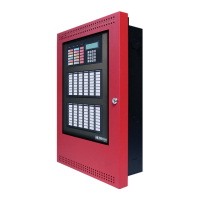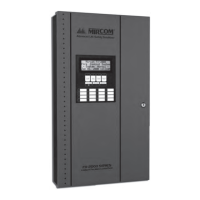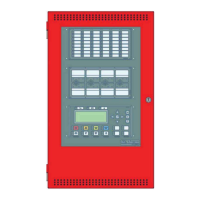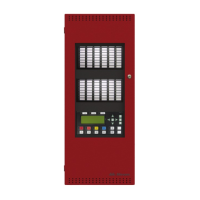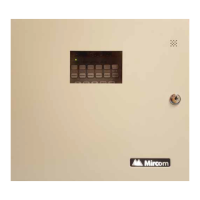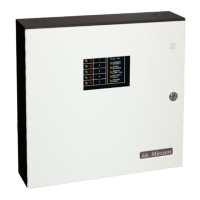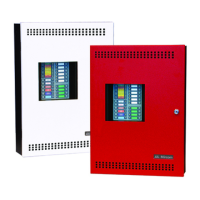26
5.2.1 Alarm Input (Non-Verified)
An un-bypassed, non-verified alarm input entering into alarm, activates the common alarm
sequence.
Common Alarm Sequence
• Updates un-bypassed relay, signal, and strobe outputs based upon their configuration.
• Activates Alarm zone status indicators associated with the input.
• Alarm input activations display first and as the highest priority on the shared display in
the common queue.
• Devices configured as alarm inputs display a pre-alarm condition on the shared display
and on the alarm zone status indicator.
• Restoring the pre-alarm condition clears the status. If the input goes from pre-alarm to
alarm, the pre-alarm status will be replaced with the alarm status for the input.
• Devices configured as alarm inputs display an alarm condition on the shared display and
on the alarm zone status indicator.
• Once an alarm input is in alarm the alarm condition is latched until system reset
(changes in status from alarm to pre-alarm or to normal are ignored).
5.2.2 Supervisory Inputs
Devices can be configured as latching or non-latching supervisory inputs. Any un-bypassed
supervisory input entering alarm activates the common supervisory sequence.
Common Supervisory Sequence
• Updates un-bypassed relay, signal, and strobe outputs based upon their configuration.
• Activates Supervisory zone status indicators associated with the input.
• Supervisory input activations display as the second highest priority on the shared display
in the common queue.
• Devices configured as supervisory inputs display as supervisory conditions on the
shared display and on the supervisory zone status indicator.
• Restoring the non-latching supervisory input returns all outputs correlated to the input,
that are not correlated to another active input, to normal.
• Zone display indicators update announcing the input is no longer active and removes the
message from the shared display common queue.
• If there are no other active supervisory inputs the common supervisory condition will be
restored.
Latched supervisory inputs operate the same as non-latched supervisory inputs with one
exception:
• A normal to off-normal status change indication shall be latched and only manually
resettable at the control unit or display and control centre.
5.2.3 Building/Property Safety Input
Building/Property Safety Inputs may include but are not limited to: fan status, dampers,
motors, elevators, telephones, etc.
Building/Property Safety Inputs may be programmed to LED Indicators. The input status will
activate the LED as configured.
• Building input activations display as the third highest priority on the shared display in the
common queue. They are lower than supervisory and higher than troubles.
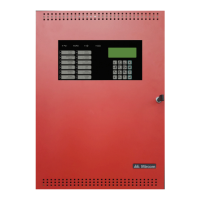
